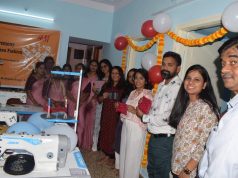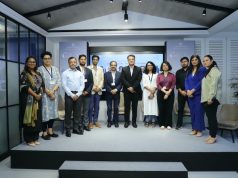We have a waste problem. The linear design model of creating products with new materials, using it for its intended purpose and then throwing it away has prevailed as long as humans have been making products. Even with the monumental efforts to encourage recycling, our world is still coping with the huge impact of this model – in landfills, oceans, and waterways. To put it in perspective for the technology industry, in 2019, only 17.4% of the 53.6 million metric tons of e-waste generated was recycled properly. There is a better way to recycle – it’s called circularity. And put simply, it means turning what would be trash into treasure – reusing these materials to create new products.
At Dell Technologies, we are acting by playing a role in advancing circular design. We’ve been working on this for over a decade, with our first OptiPlex desktop made with recycled plastics in 2007. But as an industry, we need to move faster, and we need to move together. This is why we set this moonshot goal for the future: By 2030, for every product a customer buys, Dell Technologies will reuse or recycle an equivalent product, and 100% of our packaging and more than half of our product content will be made from recycled or renewable material.
The drive to meet this goal is embedded across our entire organization and portfolio in a variety of ways. Our pioneering work with closed-loop plastics means the display you have today could contain recycled plastics from a display returned five years ago. New reclaimed carbon fiber technology means your Latitude could be made in part from waste from the aerospace industry. And plastic water bottles that once littered a beach are now packaging, protecting your XPS through our partnership with NextWave Plastics. Soon, you will be able to buy the first PCs in the industry to use bioplastics derived from tree waste from the pulp and paper industry in their design. And our new as-a-Service “Project APEX” offerings will help companies retire infrastructure in a secure and environmentally friendly way, with Dell managing the return and refurbishing of used IT.
However, to get where we want to be, we need to accelerate across our entire portfolio beyond anything we’ve ever done before. We need to try new materials, reinvent processes and push product design to the absolute limits of what is possible. And we can’t do it alone.
Driving Bold Design Concepts Forward
A typical laptop includes more than 200 parts and components made using plastics and metals. That adds a ton of complexity when considering reuse and responsible recycling, which we have learned first-hand. Visiting recycling facilities and taking apart old technology inspires us to make improvements – removing adhesives, limiting the use of screws and allowing common tools to be used.
The reality is, now is the time to accelerate, leaving no design avenue not explored, no boundary not pushed to test new concepts, materials and technology. Through exploring what’s possible tomorrow, we can gain deeper understanding of possible solutions to implement today.
Here’s how your business can embrace a circular design vision:
– Enable reincarnation and longer lives: Strive to design products that can be ‘reincarnated,’ having multiple lives by enabling repeated lifecycles of reuse or upcycling. Supporting this means pushing the boundaries of easy assembly and fast disassembly. Imagine a design that could allow an entire product to break down into component level with the removal of a single pin. Using 5G and strong cloud connectivity, regular, automatic updates means products won’t degrade – they get better.
– Focus on the sustainable core: Shift components inside the box to be more sustainable. Internal components and motherboards are some of the most carbon-intensive components to manufacture. Think of evaluating ways to reduce how much your organization uses, uses recycled and renewable materials to make them, and shift to reuse of whole components, building a ‘new’ product around these valuable resources and giving them a second life.
– Explore the power of artificial intelligence (AI) and data: Discover how to use artificial intelligence to design for behavior change, predict failures and energy efficiency. At Dell Technologies, we’re working on “self-healing” devices that reconstitute or repair themselves through AI and machine learning. We’re building dashboards for IT admins to analyze the performance of their “fleet” and the impact on the company’s carbon footprint. For consumers, we’re planning apps to guide them on sustainable use and aid in recycling when a product is approaching the end of its usefulness. Evaluate the ways in which your business can utilize AI and data to incite behavior change.
– Embrace a culture of innovation: To continue to progress, it is essential to promote innovative thinking throughout your business. Listen to your employees, customers and key partners as a source of new ideas. Advocate for diversity in your workforce, in addition to creating and maintaining an inclusive culture. A recent BCG study found that companies with above-average diversity produced a greater proportion of revenue from innovation (45% of total) than from companies with below-average diversity (26%). Finally, keep agility at your core – successful innovation thrives in environments that are flexible and willing to adapt.
Our objective with our moonshot goal is simple – the more we take back to reuse or recycle, the less waste there is on our planet. However, it’s not enough to create change only for ourselves. We want to inspire transformation for the entire technology industry, and it will take industry-wide action to rethink existing approaches to move toward products designed for circularity. That’s why we are proud to be a part of the newly formed Circular Electronics Partnership (CEP) – a relationship between the World Business Council for Sustainable Development (WBCSD) and the World Economic Forum (WEF) – where experts, business leaders and international organizations will come together for the first time to co-design solutions around recycling.
Through partnerships like CEP, we push toward increased collaboration. So, ultimately, we can advance the future of circularity today for tomorrow. How will you contribute?
Ed Boyd is Senior Vice President, Experience Design Group at Dell Technologies. Ed joined Dell in October 2007 initially to lead the Consumer Experience Design Group. In 2010 Ed’s role was expanded to cover Dell’s Commercial and Enterprise businesses too. Ed is responsible for Industrial Design, User Experience Design, and Advanced Design. Ed’s strategic vision is helping Dell define and deliver award-winning products and solutions.
Views of the authors are personal and do not necessarily represent the website’s views.
Thank you for reading. Please drop a line and help us do better.
Regards,
The CSR Journal Team













